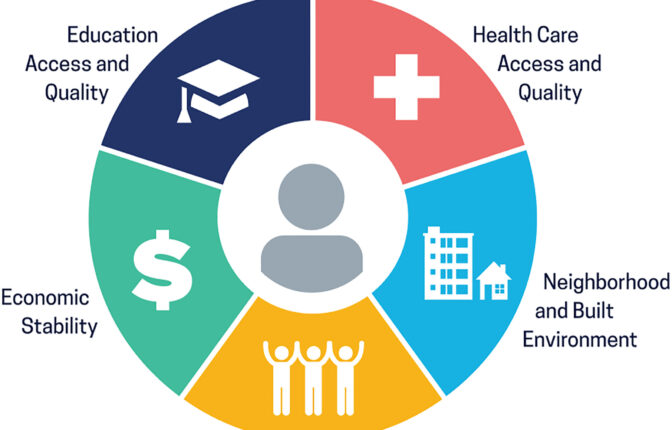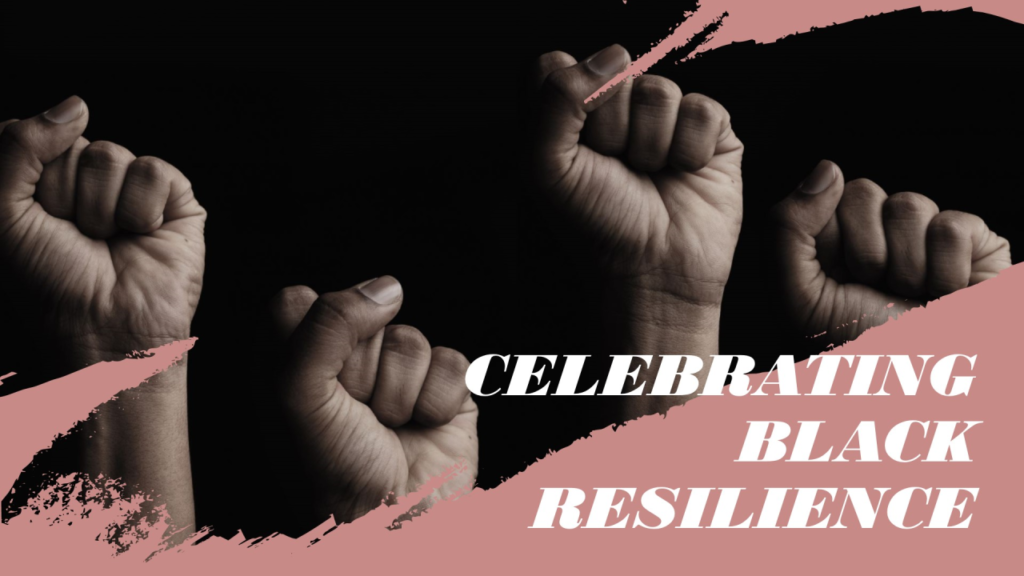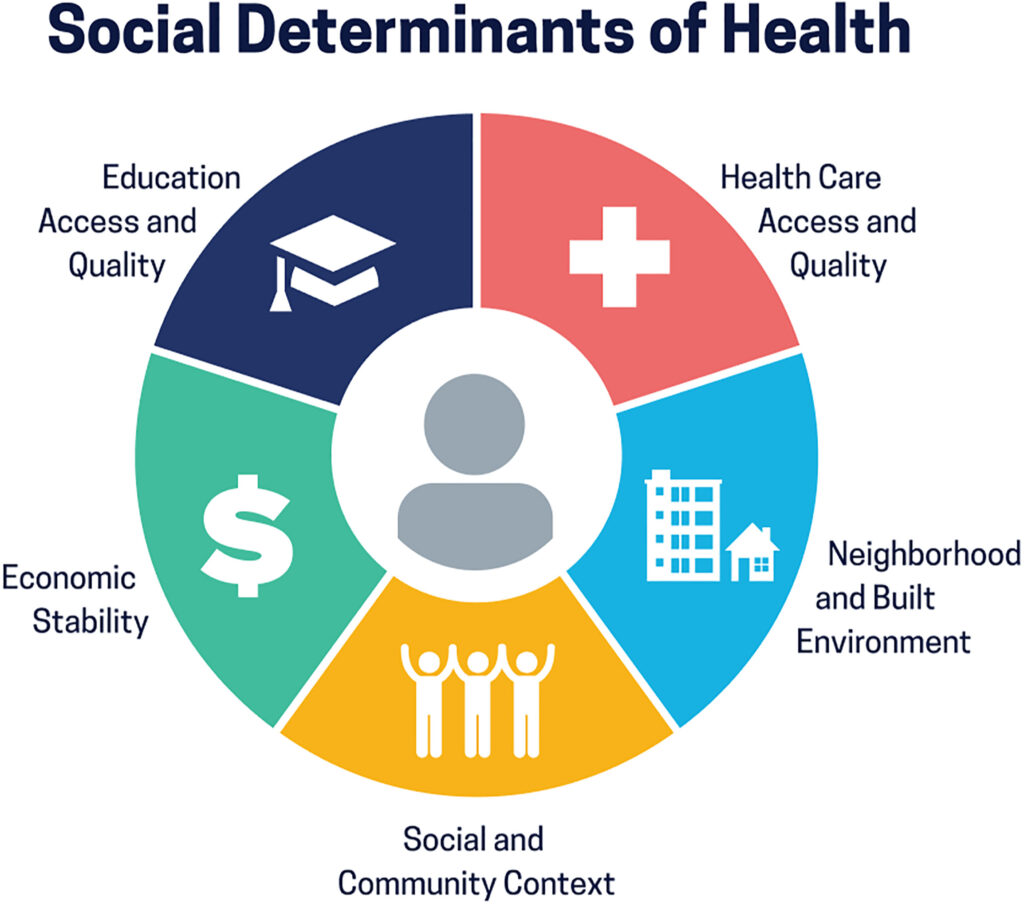Black Canadians face systemic disparities and challenges rooted in historical racism,
discriminatory policies, prejudicial practices, and social biases, all of which continue to have a
wide range of impacts on this population (Williams et al., 2022). A comprehensive
understanding of the obstacles experienced by Black Canadians requires a clear definition of
racism, systemic racism, and discrimination followed by a discussion about the effects of these
phenomena on life outcomes.
Bonilla-Silva (1997) and Williams (2004) both provide definitions of racism that
contribute to this project. Collectively, the authors define racism as an organized social system in
which the dominant racial group, based on an ideology of inferiority, categorizes and ranks
people into social groups called “races” before subsequently devaluing, disempowering, and
differentially allocating valued societal resources and opportunities to groups defined as inferior.
Racism comprises four dimensions: interpersonal racism, internalized racism, institutional
racism, and structural racism. Interpersonal racism, the most well-known form, refers to racially
motivated interactions between individuals, while internalized racism involves the incorporation
of racist attitudes, stereotypes, prejudices, beliefs, and ideologies into a person’s worldview
(Schouler-Ocak et al. 2021). Institutionalized racism refers to the social and cultural forces,
institutions, ideologies, and processes that interact to create and reinforce inequalities between
ethnic groups. Finally, structural racism constitutes the social conditions that promote racial
discrimination through mutually reinforcing systems of housing, education, employment,
income, benefits, credits, media, healthcare, and criminal justice (Schouler-Ocak et al. 2021).
The impact of racism on the Black Canadian population extends far beyond individual
feelings and influences mental health, physical health, and life outcomes. Goosby et al. (2015)
examined the relationship between perceived discrimination and levels of C-reactive protein and
blood pressure in African American youth. Using face-to-face interviews and blood tests, the
authors found that the extent of perceived discrimination increases levels of C-reactive protein
and blood pressure. Other research has found that higher levels of c-reactive protein and blood
pressure have both been found in cardiovascular diseases posing risk to heart health and reducing
life expectancy (Hage, 2014). Another study by Korous et al. (2017) examined the relationship
between racial discrimination and cortisol output, finding that minorities often display
dysregulated cortisol secretion. Cortisol is a steroid hormone that fulfills a crucial role in the
body’s stress response system (Jones & Gwenin, 2021). Excessive or insufficient cortisol levels
pose a threat to an individual’s overall health, especially with the immune, metabolic,
cardiovascular, cognitive, and digestive systems (Jones & Gwenin, 2021). This research, in
conjunction, highlights the negative impact of racism on an individual’s physical health.
In addition, racism can detrimentally affect an individual’s mental health. In a meta-
analysis, Schmitt et al. (2014) examined the relationship between perceived discrimination and
psychological well-being. The authors found that individuals who interpret themselves as the
victim of racism can experience reductions in self-esteem and life satisfaction along with
depression, anxiety, and psychological distress, phenomena that concur with the Minority Stress
Theory. Moreover, exposure to racism throughout a lifetime can result in poorer health outcomes
through a process known as weathering, which refers to the progressive deterioration of health
for members of marginalized ethnic groups who endure long-term social and economic
disadvantages (Geronimo, 1992). Several authors examined the weathering effect and found that
the experiences of cumulative social and economic disadvantages, particularly in the areas of
employment, earnings, housing, and neighborhoods shaped by racism, constitute leading causes
of the weathering effect (Forde et al., 2019; Gee et al., 2019; Nazroo et al., 2020).
The Social Determinants of Health framework, first developed by Solar and Irwin (2010),
provides a solid foundation to explore and understand the experience of Black Canadians. In this
framework, the authors define four core domains that directly influence health outcomes: poverty
or food insecurity, education, employment, and housing. This framework is supported by another
theoretical perspective called the Social Integration Framework (Ager & Strang, 2008). This
model examines similar core domains that directly influence the way in which individuals
become integrated into a community: employment, housing, education, and health. According to
Ager and Strang (2008), these domains collectively contribute to health outcomes. Furthermore,
a Government of Canada (2020a) report on the social determinants of health for Black Canadians
examined key factors of systemic disparities faced by Black Canadians. In sum, this research
demonstrates many areas in which the Black population of Canada faces major health
inequalities, and the findings in each of these areas will be outlined in the sections below.
Poverty and Food Insecurity
Liu et al. (2023) define food insecurity as inadequate or insecure access to food resulting
from financial constraints. Poverty and food insecurity constitute strongly correlated factors as
Wight et al. (2014) demonstrated in their study that food insecurities mainly result from issues
pertaining to financial resources. Specifically, Wight et al. (2014) used the official poverty
measure (OPM) and the new supplemental poverty measure (SPM) to conduct their research.
The OPM, created in the 1950s, compares an individual’s or family’s resources to a set of
thresholds that represent the minimal income needed to support a family (Iceland, 2005). This
measure may vary depending on the size and makeup of the family. Individuals or families with
less than the required resources are deemed impoverished (Iceland, 2005). The SPM, created in
2010, includes family resources and needs as well as income from all sources, including cash
transfers; value of near-cash benefits; National Lunch Program; supplementary nutrition for
women, infants, and children (WIC); housing subsidies; and low-income home energy assistance
(LIHEAP) tax credits and payments, such as the EITC, minus necessary expenses for critical
goods and services not included in the thresholds (Wight et al., 2014). Wight et al. (2014) found
that incidences of food insecurity increase as the income-to-needs ratio decreases, thus
demonstrating a statistical significance in the relationship between poverty and household food
insecurity.
Furthermore, studies have found that in comparison to households of other ethnicities,
Black households with children experience the highest level of food insecurity (Sharanjit, 2023).
Other research performed by Statistics Canada (2020a) supports the idea of financial and food
disparities between Black and White Canadians. Between 2009 and 2012, studies found that in
comparison to White Canadians, Black Canadians were 2.8 times more likely to report moderate
or severe household insecurity with almost with almost four in ten (38%) reporting food
insecurity in 2023 (Government of Canada, 2020a; Sharanjit, 2023). In 2021, 12.4% of Black
Canadians, in comparison to 8.1% of the total population, lived in poor households (Statistics
Canada, 2023). Moreover, Schimmele et al. (2023) used Canada’s official poverty line to
examine generational differences in the poverty rate between 11 racialized groups and the White
population. Canada’s official poverty line emanates from the market basket measure (MBM)
thresholds, which are based on the cost of a specific basket of goods and services for a family of
two adults and two children. The basket measure contains qualities and quantities of food,
clothing, footwear, transportation, shelter, and other expenses, thus representing a basic and
necessary standard of living in a province for a specific year (Statistics Canada, 2015). Using the
MBM, Schimmele et al. (2023) found that the poverty rate of Black Canadians was 4.3
percentage points higher than that of the White population. This finding, along with the other
research in this section, indicates that due to the strong correlation between poverty and food
insecurity, Black Canadians, in comparison to White Canadians, consistently demonstrate an
increased likelihood of experiencing food insecurity.
Education
Research generally considers education as a major predictor of a healthier and more
meaningful life. As stated by the Government of Canada (2020a), education provides the
knowledge and skills required for life success as well as personal growth and development.
Despite the importance and beneficial nature of education, Black individuals living in Canada
face systemic barriers to accessing higher education and achieving academic success. The
Government of Canada (2020a) recounts that in 2016, Black women in Canada were 27% and
21% less likely than white women to complete high school and university respectively.
Moreover, Black youth, in comparison to other Canadian youth, demonstrate a lower likelihood
of obtaining a postsecondary degree (Government of Canada, 2020a). Lastly, the Government of
Canada (2020a) found that in comparison to students of other ethnicities, Black high school
students experienced a greater probability of being streamed into low-wage and applied
programs. This streaming occurred mainly due to negative stereotypes about Black Canadians as
well as lower expectations from teachers and school staff.
Employment
The quality of education generally constitutes a determining factor in an individual’s
employment opportunities and earning potential. Thus, the educational disadvantages that Black
Canadians experience also affect their employment prospects and status. In the 2016 census, the
Government of Canada (2020a) found that in comparison to their White counterparts, Black
women were almost twice as likely and Black men almost 1.5 times more likely to experience
unemployment in Canada. Moreover, 15.6% of Black adults and 10.7% of White adults work in
low-skilled occupations. Since these jobs generally lead to lower wages, Black adults
disproportionately experience employment disadvantages associated with position and salary.
Lastly, many Black individuals living in Canada face discrimination when applying for a job.
The Government of Canada (2020a) found that in comparison to candidates with African names,
applicants with Franco-Quebecois names were 38.3% more likely to obtain an interview. This
finding demonstrates the existence of systemic discrimination against individuals of African or
Black origin.
Housing
As one of the social determinants of health, housing affects the quality of life and
wellness for individuals. Specifically, poor-quality housing negatively impacts health and well-
being (Rolfe et al., 2020). Despite ongoing research outlining the importance of safe and secure
housing, in 2020, 20.6% of Black Canadians reported living in housing that cost more than they
could afford, while only 7.7% of White Canadians lived above their housing means (Government
of Canada, 2020a). Moreover, research reported that 12.9% of Black Canadians and only 1.1%
of White Canadians lived in crowded housing. A report from the Government of Canada (2020a)
found that in comparison to individuals of other ethnicities, Black individuals experienced a
higher likelihood of rejection from potential landlords. This result suggested that landlords and
other institutional factors contributed to systemic discrimination that reduced access to housing
for Black Canadians.
Criminal Justice System
The criminal justice system contributes to an individual’s integration within their
community as well as their health and safety. In comparison to other ethnicities, Black people
experience overrepresentation as both victims and accused criminals in Canada’s justice system.
The Government of Canada (2022b) found that Black individuals comprised 9% of offenders
under federal jurisdiction despite representing only 4.2% of the total Canadian population.
Moreover, the same source reported that in Ontario, Black adults constitute 5% of the adult
population while accounting for 14% of admissions to correctional services. Lastly, this report
found that in comparison to White individuals, Black individuals experience a higher likelihood
of incurring charges for drug use and possession (Government of Canada, 2022b). These
statistics provide ample evidence that racial profiling and inequitable treatment from law
enforcement disproportionately affects Black Canadians, leading to higher rates of incarceration
and the overrepresentation of this community in the justice system.
The publication of police brutality against Black individuals has encouraged a rise in
global awareness and advocacy against racial injustice. Specifically, news of police officers
injuring or murdering Black individuals in the United States has spurred global movements such
as Black Lives Matter. The Black Lives Matter Movement, founded by Alicia Garza, Patrisse
Cullors, and Opal Tometi, began in 2013 after a White police officer, George Zimmerman, killed
an unarmed black teenager, Trayvon Martin, and was acquitted for the murder (Black Lives
Matter, n.d). The movement became globally recognized after the killings of Michael Brown
(2014) and George Floyd (2020). Following these events, numerous videos surfaced on social
media, providing clear evidence of murder, which led to protests around the world. Despite this
heightened awareness, Black people in the United States and Canada still experience
disproportionate police brutality and murder relative to their population size (Crosby et al.,
2023).
Physical Health Inequities
Black Canadians experience inequities that lead to poorer health outcomes. This
population, in comparison to White Canadians, experienced a higher overall mortality rate
(Black Health Alliance, n.d). A report by the Black Health Alliance found that in comparison to
their White counterparts, Black individuals living in Toronto were three times more likely to
become infected or hospitalized with the Coronavirus Disease 2019 (COVID-19). Moreover,
Statistics Canada (2022) found that the prevalence of diabetes among Black Canadians was 2.1
higher than that among White Canadians. Despite experiencing higher rates of chronic illnesses
and diseases, Black Canadians, in comparison to the general Canadian population, demonstrate
lower utilization levels of the healthcare system (Quan et al., 2006). These factors both fulfill a
major role in health inequities among the Black population in Canada.
Family doctors play a crucial part in assuring the delivery of comprehensive and
personalized healthcare as well as helping patients to navigate different resources that enable
improved health outcomes (Hellenberg et al., 2018). As the first point of contact for health
conditions, family doctors diagnose for a wide range of conditions and generally refer patients to
other specialists. While researchers agree about the importance of family doctors, Black
Canadians, in comparison to their white counterparts, demonstrate a lower likelihood of having a
family doctor and have experienced a ninefold lower rate of contact with general healthcare
providers (Siddiqi et al., 2017; Statistics Canada, 2022). The lack of doctors within the Black
Canadian population has a direct impact on the health of the community. For example, Olanlesi-
Aliu (2023) found that Black Canadians report the highest rate of heart disease and stroke, both
of which figure prominently among the most common causes of death in Canada.
Mental Health Inequities
The topic of mental health has evolved rapidly over the last few years in Canada, shaping
the country’s approaches to this crisis (Cosco et al., 2022). In Canada, mental health currently
comprises a crucial element of an individual’s general wellness, which affects quality of life,
relationships, productivity, physical health, and overall well-being. While Canada has exerted a
significant amount of effort into addressing the mental health of its citizens, the Black Canadian
population faces persistent challenges in accessing culturally sensitive mental health support and
resources. In comparison to their White counterparts, Black Canadians report poorer self-rated
mental health. For instance, Black Canadians experience rates of depression that rank six times
higher than those of the general Canadian population (Cénat et al., 2022). Despite experiencing
higher rates of mental health issues, Black Canadians use mental health services at only half the
rate of White Canadians (Chiu et al., 2018; Government of Canada, 2022; Fante-Coleman &
Jackson-Best, 2020). As in the case of physical wellness, Black Canadians face inequities in
service access and utilization as well as higher rates of mental health conditions.





